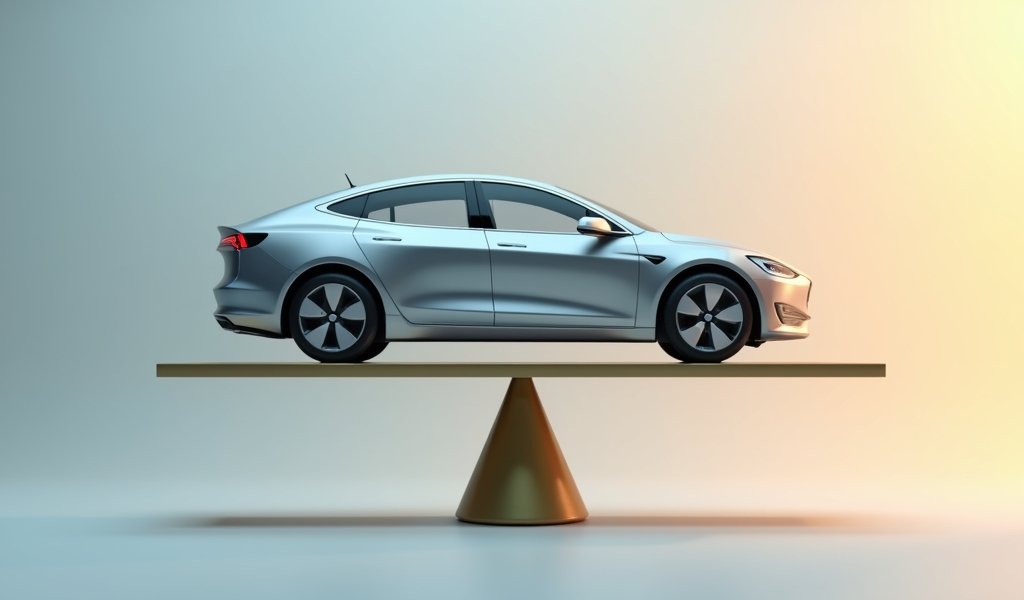Overview
This article provides expert guidance on using lease vs. buy car calculators to make financially sound vehicle decisions, emphasizing the importance of looking beyond monthly payments to consider factors like driving habits, long-term plans, and tax implications. It recommends specific calculator tools and explains how to interpret their results, helping readers determine whether leasing or buying aligns best with their personal financial situation and lifestyle needs.
Table of Contents
- Why the Lease vs. Buy Decision Matters
- Understanding Car Lease Calculators
- Understanding Car Purchase Calculators
- Pro Tip 1: Look Beyond the Monthly Payment
- Pro Tip 2: Factor in Your Driving Habits
- Pro Tip 3: Consider Your Long-Term Plans
- Pro Tip 4: Don’t Forget Tax Implications
- Pro Tip 5: Use Advanced Calculator Features
- Recommended Lease vs. Buy Calculators
- How to Make Your Final Decision
- Conclusion
- Frequently Asked Questions
Why the Lease vs. Buy Decision Matters
I’ve been working on cars and helping folks make smart vehicle decisions for over 20 years, and let me tell you – choosing between leasing and buying isn’t just another checkbox on your car shopping list. It’s a financial fork in the road that affects your wallet for years to come.
Think of leasing as borrowing the car’s best years. You get lower monthly payments, but when the lease ends, you walk away with nothing but memories. Buying means higher payments initially, but eventually that beauty is all yours – no payments and an asset in your driveway.
Your driving style matters too. If you rack up miles like they’re going out of style, leasing with its mileage caps might hit you with nasty overage charges. On the flip side, if you barely drive, buying means paying for more car than you’re actually using.
Using a lease vs buy a car calculator isn’t just smart – it’s essential. These tools help you see beyond the sales pitch and understand what each option truly costs over time. I’ve watched countless customers save thousands by spending just 15 minutes with a good calculator before signing anything.
Understanding Car Lease Calculators

A good lease calculator translates dealership jargon into plain English and hard numbers. To get accurate results, you’ll need to gather some key information first:
- Vehicle selling price (not the MSRP, but your negotiated price)
- Down payment amount
- Money factor (basically the interest rate in disguise)
- Residual value (what they expect the car to be worth when your lease ends)
- Lease term (typically 24-48 months)
- Your local sales tax rate
- Any additional fees (acquisition fee, disposition fee, etc.)
Once you plug these numbers in, the calculator shows your estimated monthly payment and total lease cost. The real power comes from tweaking different inputs to see how they affect your bottom line.
For example, extending your lease from 36 to 48 months might lower your monthly payment by $75, but cost you $800 more in the long run. Or you might discover that putting $1,000 more down reduces your payment by only $28 per month – not worth tying up your cash.
Don’t just accept the dealer’s first offer. Run multiple scenarios through the calculator, and you’ll spot the difference between a good deal and a money pit. I’ve seen luxury car lease specials that looked amazing on paper but fell apart once we ran the numbers.
Understanding Car Purchase Calculators
Purchase calculators need to look at the bigger picture – not just your loan terms, but the total cost of ownership. A comprehensive calculator should account for:
- Purchase price and sales tax
- Down payment and trade-in value
- Interest rate and loan term
- Insurance costs (which often differ between leasing and buying)
- Expected fuel expenses based on your typical driving
- Maintenance and repair projections (these increase as cars age)
- Depreciation rate (how quickly your car loses value)
- Potential resale value at your planned selling point
The beauty of a good purchase calculator is seeing how these costs play out over time. That $30,000 SUV might actually cost $45,000 over five years when you factor everything in. Or that bargain-priced used luxury car might cost more in maintenance than a new economy model.
I always recommend using tools from trusted sources like Edmunds’ True Cost to Own calculator, which pulls from real-world data rather than optimistic estimates. Their database includes maintenance histories and depreciation patterns that can reveal hidden costs you might otherwise miss.
Pro Tip 1: Look Beyond the Monthly Payment
If there’s one thing I’ve learned in my years at the shop, it’s that monthly payments are deceptive little numbers. They’re like looking at a car’s paint job while ignoring the engine – pretty, but not telling the whole story.
Dealers love focusing on monthly payments because it’s easier to hide the total cost. “Just $299 a month!” sounds way better than “You’ll pay $21,000 over the next five years plus another $2,000 in fees.”
For leases, a suspiciously low monthly payment usually means you’re making a hefty down payment (sometimes called “capital reduction”) or that there’s a balloon payment lurking at the end. Always calculate the total: down payment + (monthly payment × number of months) + end-of-lease fees.
For purchases, extending a loan from 60 to 72 months might drop your payment by $75, but you’ll pay hundreds or thousands more in interest. Plus, longer loans mean more time “underwater” – owing more than the car is worth.
I had a customer last year who was fixated on keeping his payment under $400. He was about to sign a 75-month loan until we ran the numbers and realized he’d be paying nearly $8,000 in extra interest compared to a 48-month term with slightly higher payments. That’s a lot of money for a little monthly breathing room!
Pro Tip 2: Factor in Your Driving Habits
Your relationship with your odometer can make or break a lease deal. Most leases cap you at 10,000-12,000 miles annually, with penalties of 15-30 cents for each mile over. That doesn’t sound like much until you realize going 5,000 miles over on a three-year lease could cost you an extra $2,250!
Be honest with yourself about your driving habits. That weekend warrior lifestyle with camping trips and beach visits adds up quickly. If you’re regularly putting 15,000+ miles annually on your vehicles, leasing might end up costing you more than buying – even with the lower monthly payments.
On the flip side, if you barely drive (maybe you work from home or live in a walkable city), leasing can be smart. Why pay to own all 100,000 miles of a car’s life when you’ll only use 20,000 of them?
A lease vs buy a car calculator can help you see how your mileage affects the equation. Most calculators let you input different annual mileage figures to compare scenarios. Be sure to check what car loan pre-approval online options might be available before heading to the dealership, as this gives you more negotiating power.
Pro Tip 3: Consider Your Long-Term Plans

Your future plans should be driving your present decision. If you’re the type who gets the itch for a new ride every three years, leasing aligns with your habits. You’ll avoid the hassle of trade-ins and negative equity that often comes with buying and selling frequently.
But if you’re more like my customer Helen who just traded in her 14-year-old Camry with 210,000 miles, buying is your ticket. Those payment-free years after your loan ends dramatically reduce your average annual cost. Helen’s cost per year of ownership worked out to less than half what a perpetual leaser would pay.
Life changes matter too. Growing families often need to upgrade vehicles sooner than expected. Career shifts might change your commute dramatically. Knowing the best time of year to buy a car can save you thousands if you’re planning to purchase.
A good lease vs buy calculator lets you compare different ownership timelines. Try running scenarios for keeping a purchased car for 3, 6, and 10 years versus consecutive 3-year leases over the same periods. The results might surprise you – especially when you factor in how vehicles depreciate most in their early years.
Pro Tip 4: Don’t Forget Tax Implications
The tax angle often gets overlooked, but it can significantly tip the scales – especially if you use your vehicle for business. When leasing for business use, you can typically deduct your monthly payments as a business expense. With purchasing, you’re usually limited to depreciation deductions spread over several years.
Self-employed folks and small business owners should pay special attention here. According to data from the IRS Small Business Guide, vehicle deductions are among the most significant tax benefits available to entrepreneurs.
Even for personal use, some states handle sales tax differently between leasing and buying. Some charge tax on the entire purchase price upfront when buying but only on monthly payments when leasing – potentially saving you thousands in immediate out-of-pocket costs.
Most online calculators don’t capture these nuances fully. I recommend discussing your specific situation with a tax professional before making your final decision. What looks like the more expensive option on paper might actually be cheaper after accounting for tax benefits.
Pro Tip 5: Use Advanced Calculator Features
Not all lease vs buy a car calculators are created equal. The basic ones give you a rough comparison, but advanced calculators offer features that can reveal surprising insights:
- Side-by-side scenario comparison: See multiple options at once rather than toggling back and forth
- Sensitivity analysis: Test how changes in interest rates, fuel prices, or maintenance costs affect your total expense
- Inflation adjustments: Factor in how the value of money changes over time
- Opportunity cost calculator: See what investing your down payment might yield instead
- Early termination estimator: Calculate the cost of ending a lease or loan before the term ends
These advanced features help you stress-test your decision against different life scenarios. What if gas prices double? What if you need to relocate for work in two years? What if interest rates drop significantly after you buy?
I’ve had customers discover that the “more expensive” option on paper was actually cheaper once they factored in their specific circumstances. One family realized that buying actually cost less than leasing when they included the tax benefits of their home-based business.
Recommended Lease vs. Buy Calculators
After testing dozens of calculators over the years, here are the ones I trust and recommend to my customers:
- Consumer Reports Car Cost Calculator – Includes reliability data that affects long-term ownership costs
- Edmunds Auto Calculator – Offers detailed comparisons and helpful explanations of leasing terms
- Bankrate’s Auto Calculator – Features a clean interface and excellent visualization of costs over time
- Money Under 30’s Lease vs. Buy Tool – Particularly good for first-time buyers with simple, clear explanations
For those who want more sophisticated analysis:
- CalcXML’s Advanced Auto Calculator – Includes detailed tax analysis
- Dinkytown Financial Calculators – Offers excellent business use calculations
I always suggest using at least two different calculators to cross-check your results. Each uses slightly different assumptions and methodologies, so comparing outputs helps ensure you’re getting a complete picture.
How to Make Your Final Decision
With all the calculator results in hand, it’s time to add the human element back into the equation. Numbers matter, but so do your preferences and priorities.
Ask yourself these honest questions:
- How important is having the latest features and technology to you?
- Do you enjoy the pride of ownership, or prefer avoiding long-term commitments?
- How do you feel about handling maintenance as vehicles age?
- Do you want to build equity, or maximize your current cash flow?
- How much do you value predictable costs versus potentially lower long-term expenses?
Watch for red flags in both options too. Lease agreements with unreasonable mileage restrictions or punitive early termination clauses deserve scrutiny. Purchase arrangements with extended loan terms or negative equity rolled in from previous vehicles might signal you’re buying more car than you can afford.
Remember, there’s no universally “right” answer – just the right answer for your situation. I’ve seen both leasing and buying serve customers well when the choice aligns with their financial situation and lifestyle.
Conclusion
After spending two decades helping folks navigate car decisions, I’ve learned that the lease vs. buy dilemma isn’t one-size-fits-all. Using a good lease vs buy a car calculator isn’t just about crunching numbers – it’s about finding the option that fits your life like a well-designed driver’s seat.
Your decision should reflect not just what makes financial sense on paper, but what makes sense for your lifestyle, preferences, and future plans. The best choice balances the cold hard math with your real-world needs.
Whether you ultimately decide to lease that shiny new crossover or buy the reliable sedan, understanding the complete financial picture ensures you’ll drive away with confidence rather than confusion.
Take the time to use these calculator tools thoroughly. The hour you invest in this analysis could save you thousands of dollars and years of potential regret. And remember – there’s no “perfect” universal answer, just the perfect answer for you and your unique situation.
Frequently Asked Questions
What’s the biggest advantage of using a lease vs buy calculator?
A lease vs buy calculator reveals the true long-term cost difference between options, not just the monthly payment comparison. It helps you see beyond dealer sales tactics to make a financially sound decision based on your specific circumstances.
How accurate are online lease vs buy calculators?
Most reputable calculators are quite accurate if you input correct information about pricing, interest rates, and your driving habits. For best results, use calculators from established financial sites or automotive resources that update their formulas regularly.
Do I need to know my credit score before using a lease vs buy calculator?
Yes, knowing your approximate credit score helps ensure accurate results since it significantly impacts interest rates and money factors. Even a 1% difference in rates can change your total cost by thousands over the life of a loan or lease.
Can lease vs buy calculators account for electric vehicles?
Most advanced calculators now include options for EVs, accounting for factors like electricity costs, tax incentives, and different depreciation patterns. Look for calculators specifically designed for EVs if you’re considering an electric vehicle.
How far in advance should I use a lease vs buy calculator?
Ideally, run calculations at least 1-2 months before you plan to acquire a vehicle to give yourself time to compare options thoroughly. This timeline also allows you to monitor for seasonal deals and secure financing options in advance.


Pingback: cheap car lease deals near me: DIY Care - knowsyourcar.com